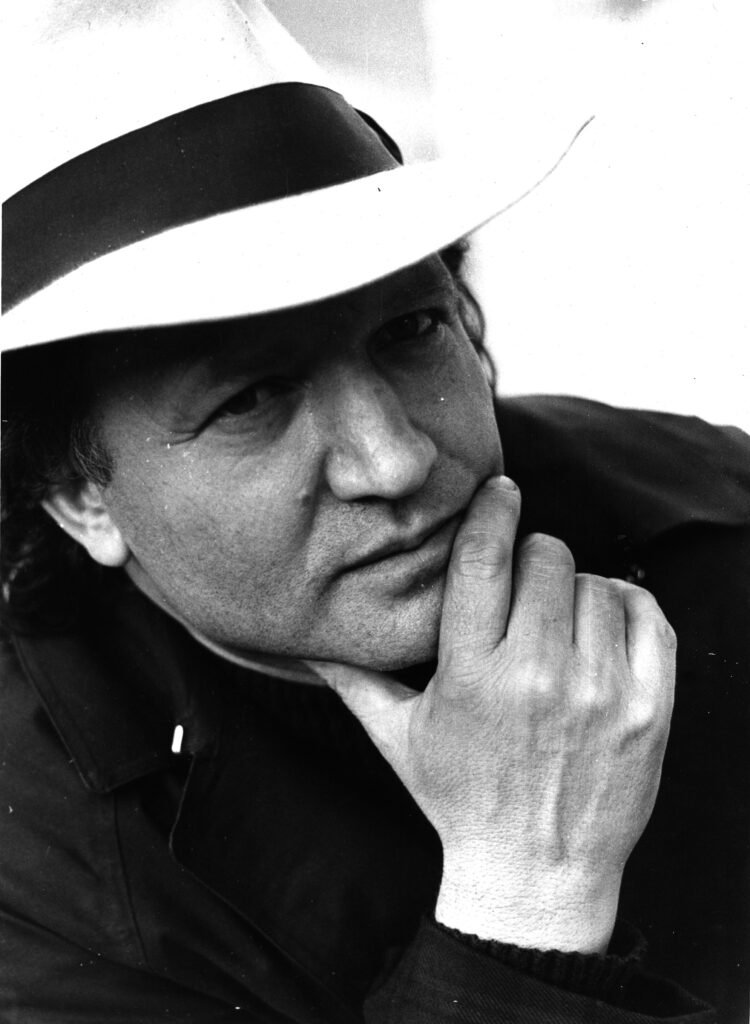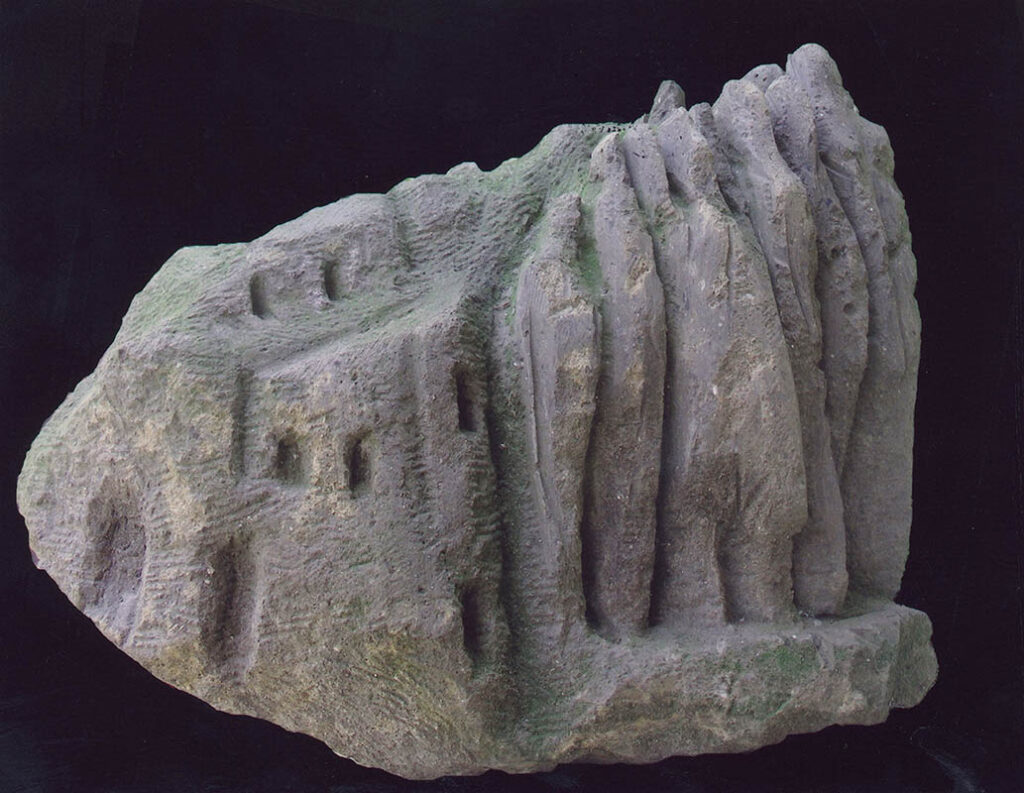

Nunzio Bibbò
23.03.1946 – 19.10.2014
1946 He was born among the farmers and terracotta workers of the Upper Sannio area, in Castelvetere (Benevento), at the age of 5/6 he began to manipulate clay with local craftsmen.
1961 He enrolles in the high school sculpture courses of the ancient school of Posillipo.
Throughout the sixties, Naples becomes his city, he studies there, discovers its most traditional and popular aspects, works in restaurants during the summer, lives in small and modest Neapolitan guesthouses together with university students.
The studies of his sculpture teachers, Tomai and Dell’Erma, are the place to discover the essence of the work and life of an artist.
1964 He enrolles at the Academy where he found the teaching of Emilio Greco, classicism in modern sculpture, Marino Mazzacurati, modern figuration, Umberto Mastroianni, abstractionism; but the continuity of teaching in the running of the courses was guaranteed by Augusto Perez.
The many days spent at the Archaeological Museum of Sculpture, in the room reserved for Venus, then with the Neapolitan sculpture of the nineteenth century and, in particular, of Gemito, becomes his breeding ground.
Later he met Medardo Rosso (“the plasticism and impressionism that his sculpture was able to express”), Brancusi (“from its purity of form I drew the push to exalt the purity of the material”), Giacometti (“the spatiality and the existentialist conception of form […], its surfaces seem to be formed by lumps of blood that, flowing, delineate long-line forms that are lost, almost evanescent, in space and atmosphere”), Moore (“what attracts you, what leads you to think beyond … are the formal solutions to problems of content … there remains a margin of sacredness, of mystery. There is in Moore’s work the synthesis of the history of sculpture”), Ipousteguy (“these shattered forms of his, placed in circumscribed environments that recall the human condition with an exceptional existential force”).
When asked why he did not express himself with realistic figurative languages, he recalls the years of the kindled disputes between supporters of different expressive languages, of the consequent involvement produced among the students of the Academy, to add: “I had the opportunity to learn from many sources and I found in the neo-figuration the language within which to conduct my research. The reference to my creative activity is the south, the Mediterranean and its land”.
He begins to exhibit in Naples and other cities in the South, while he starts to teach in Benevento.
1972 He receives a teaching assignment in Brera where he agrees to stay for only one year.
1973 He moves to Rome, where he takes up teaching in plastics at the art high school in Via Ripetta and defines his expressive language based on a figurative expressionist matrix not without suggestions borrowed from ancient Italic civilizations.
Rome becomes his new city from which he receives important stimuli, suggestions that will enrich his art. He develops relations with the Roman artistic world, but his character remains that of the creator who discreetly withdraws, living almost exclusively in his own studio.
1975 He is present at the X Quadriennale.
1976 The University of Cincinnati dedicates a solo exhibition to him, while he begins his creative activity in the art of engraving. The work of engraver begins to project him into the circuit of national and international exhibitions.
1979 he was present in the exhibition “Maggiori grafici italiani” (Major Italian Graphic Designers) which was set up in the Sala del Campidoglio.
1980 The Art Museum of Sofia organizes an important personal exhibition and dedicates a permanent room to him.
1985 The Institute of Culture of Monaco reserves him a personal one.
1987 He participated in the 4th International Biennial of Graphics in Varna, and his engravings entered the collections of the Museum of Graphics. Subsequently, he participates in the Grado’s Trienniale of Graphics.
1988 In the meantime he begins to create monumental works, the most complex of which is the door, on the themes of the life of St. Paul, for the cathedral of Reggio Calabria. The following year, the Gallery Print Workshopo in Melbourne held a solo exhibition for him.
1993 Luigi Martini curates the catalogue “Nunzio Bibbò”, published by Promoart, on the occasion of his exhibition of sculpture and engravings at the “Amore e Psiche” Bookshop in Rome. The nineties saw Bibbò’s work exhibited in numerous Italian, German and French galleries, and one of his monumental works was installed in the United States.
In the nineties his graphic production is mentioned in the Repertory of Italian engravers, in the magazine “Grafica d’arte” and he entered the collection of the Cabinet of Ancient and Modern Prints of the Municipality of Bagnacavallo, which preserves his works.
2000 Experimentation with materials with which to express one’s creativity is enriched by new experiences; tar, together with materials found (scattered and thrown away by man) becomes the object of manipulation and translated into sculptural action. An innovative path in the wake of his themes and artistic events. Now, for over a decade, he has lived close to the Roman great ring road, in a suburb full of humours that affect his sensitivity.
Solo exhibitions follow one another in Boston, Gelsenkirchen, Copenhagen.
2004 The “Complesso del Vittoriano” in Rome reserves him a retrospective exhibition, accompanied by the catalogue “Nunzio Bibbò terracottas and tars”, curated by Luigi Martini and published by Promoart; the exhibition will be repeated in 2005 at the Rocca dei Rettori in Benevento.
2011 The Venice Biennale chooses him to represent the event in Bulgaria with a solo show held at the “National Gallery of Foreign Art” in Sofia. The exhibition is curated by Iskra Zaharieva, and for the occasion the Italian Cultural Institute in Sofia publishes its catalogue, entitled “Nunzio Bibbò. Genesis of a dialogue: Italy – Bulgaria”. In view of the exhibition, Aldo Cimaglia shoots a documentary about the artist at work, while sculpting the tars.
At the “Pinacoteca Comunale S. Giacomo” in Gaeta, Ida Amitrano curates and sets up an exhibition, of which Nunzio is one of the two protagonists, and produces a catalogue entitled “Nell’immagine, l’uomo”.
2014 After his death, the reorganization of his work begins to create the Nunzio Bibbò Archive. While continuing the reorganization.
Luigi Martini